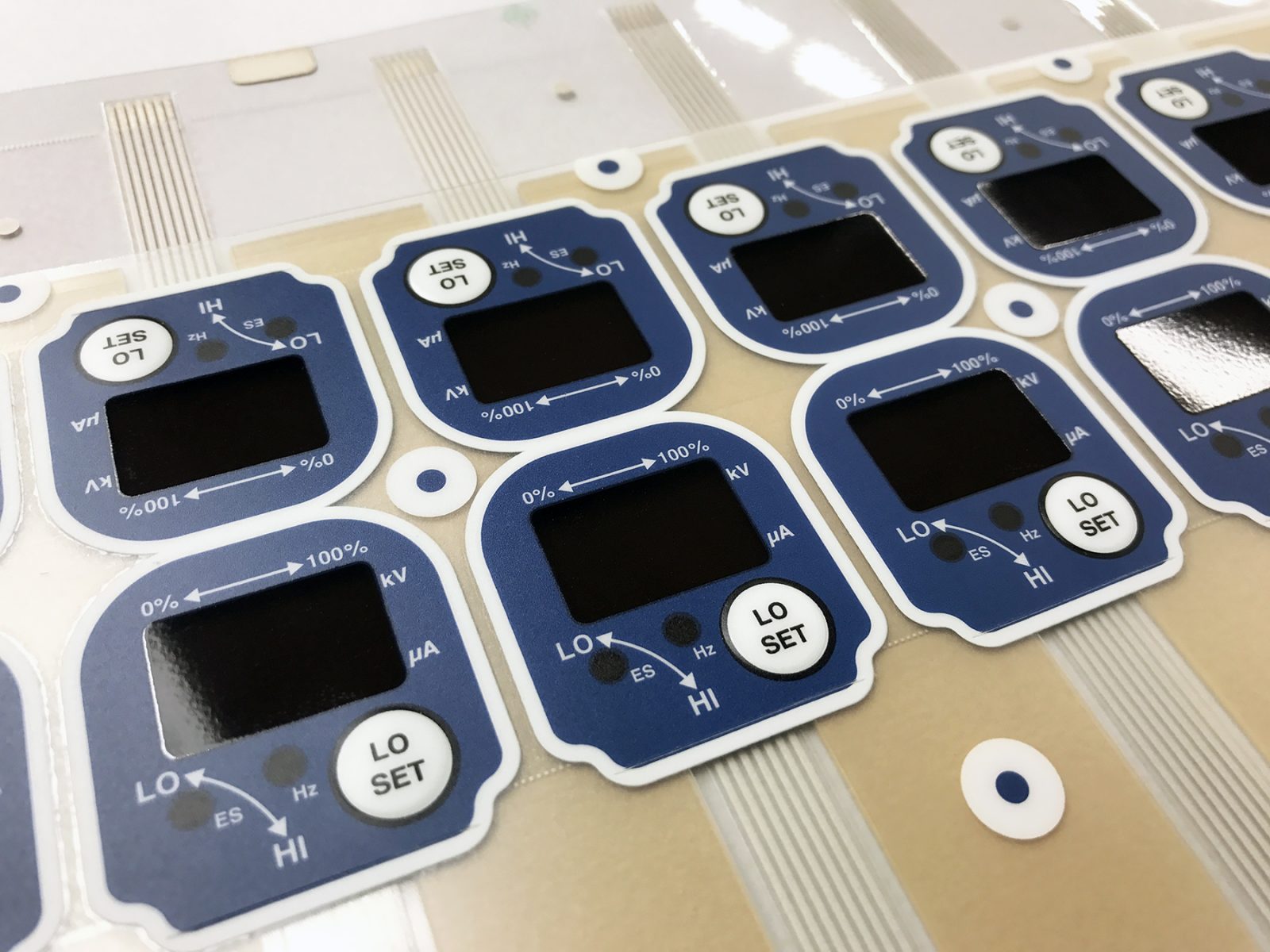Exactly How Membrane Layer Changes Add To the Longevity of Electronic Control Panels
Membrane switches play a vital duty in improving the toughness of electronic control panels, mainly via their multi-layered construction which gives effective protection versus environmental factors such as moisture and dust. This layout not only decreases the risk of circuit damage and deterioration however likewise promotes simplicity of maintenance because of its smooth surface area. Additionally, the lack of moving components considerably minimizes the likelihood of mechanical failings, making membrane switches suitable for demanding applications. Nevertheless, the ramifications of these attributes prolong beyond plain protection, increasing inquiries concerning their wider impact on performance and user experience.
Meaning of Membrane Layer Buttons

Membrane layer buttons are created to be thin and lightweight, making them suitable for applications where room is limited. They can be produced in different shapes, sizes, and colors, offering adaptability in layout that satisfies visual and practical needs. Additionally, membrane layer buttons can incorporate various innovations, such as tactile comments and LED indicators, enhancing user experience.
Due to their building, membrane switches are usually resistant to dirt, moisture, and basic wear, adding to their durability popular settings. Their seamless design not only assists in simple cleansing yet also minimizes the danger of mechanical failing, making them a preferred choice for manufacturers seeking reputable interface in their electronic control panels.
Defense Against Ecological Factors
The style of membrane changes inherently gives a level of protection versus numerous environmental aspects, which is important for preserving performance in difficult problems - Membrane Switch. These switches are typically constructed with layers of versatile materials that shield interior elements from moisture, dust, and contaminants. By encapsulating the wiring, membrane switches lessen the danger of short circuits and rust, which can significantly harm efficiency
In addition, using durable adhesives and sealants throughout manufacturing boosts their resistance to ecological difficulties. Membrane layer switches can endure exposure to chemicals and solvents, making them suitable for markets such as food processing and medical care, where health and tidiness are extremely important. Their seamless surface area style additionally avoids the buildup of dust and bacteria, facilitating less complicated cleaning and upkeep.
Temperature level fluctuations are one more ecological worry, and membrane buttons are crafted to function efficiently across a variety of temperature levels (Membrane Switch). This adaptability ensures that control panels stay operational in numerous settings, from commercial atmospheres to customer electronics
Effect On Individual Communication
Individual communication with electronic control board is dramatically influenced by the layout and performance of membrane buttons. These switches offer a tactile interface that boosts the general individual experience, permitting user-friendly navigating and control. Their responsive nature makes sure that customers get immediate comments upon activation, which is crucial for tasks requiring precision and efficiency.
Additionally, the smooth surface area of membrane changes assists in very easy cleansing and upkeep, advertising individual confidence in the reliability of the user interface. This tidiness is especially important in environments where hygiene is vital, such as medical or food handling setups. Additionally, the small and lightweight design of membrane switches adds to the visual allure of control panels, motivating individual interaction with a modern-day and smooth appearance.
Furthermore, the combination of aesthetic aspects, such as published symbols and backlighting, helps customers promptly identify features, reducing the learning contour connected with new equipment. Because of this, individuals can run devices better, leading to enhanced performance and contentment. In summary, membrane switches play an essential function in improving user communication by integrating performance, appearances, and ease of use, inevitably causing improved operational effectiveness.
Style Flexibility and Personalization
Style flexibility and personalization are necessary facets of membrane buttons, enabling suppliers to tailor electronic control board to certain applications and customer requirements. This flexibility go to website enables the assimilation of different style elements, such as shades, graphics, and textures, which can boost the aesthetic charm and customer involvement of the control board.
Membrane switches can be customized in shapes and size, fitting a variety of tools and applications, from industrial equipment to customer electronic devices. This adaptability guarantees that suppliers can produce user-friendly interfaces that straighten with customer expectations and functional demands. In addition, the capability to integrate one-of-a-kind functions such as backlighting or tactile comments even more improves usability, permitting a much more interactive experience.
Additionally, the production process for membrane layer switches over sustains the fast prototyping of layouts, enabling makers to iterate and refine their concepts quickly. This capacity not just increases the growth timeline however additionally makes certain that the end product fulfills certain functional and aesthetic criteria.

Cost-Effectiveness and Long Life
Cost-effectiveness and durability are considerable advantages their website of membrane layer buttons, making them an attractive choice for producers and end-users alike. These switches are typically less pricey to generate than typical mechanical switches, largely as a result of their streamlined manufacturing procedures and the lowered number of components called for. This price advantage extends not just to preliminary manufacturing yet also to lasting operational expenses, as membrane layer switches often require less maintenance and have a reduced failing rate.
Moreover, the long life of membrane switches over adds to their general worth. Built from resilient materials, they are immune to ecological aspects such as moisture, dirt, and chemicals, which can lead to early wear in other button kinds. The lack of moving components reduces mechanical failing, enabling membrane layer switches over to keep functionality over expanded periods.
This longevity is especially advantageous in applications needing constant efficiency under demanding problems, such as clinical devices and commercial tools. Ultimately, the mix of cost-effectiveness and longevity makes membrane switches over an economically feasible selection for manufacturers, giving dependable options that withstand the test of time while maximizing budgetary considerations.
Verdict
In verdict, membrane layer switches substantially enhance the longevity of digital control panels my blog via their robust building and construction and safety functions - Membrane Switch. In general, membrane switches represent a reliable and cost-effective option for boosting the longevity and functionality of digital control systems.